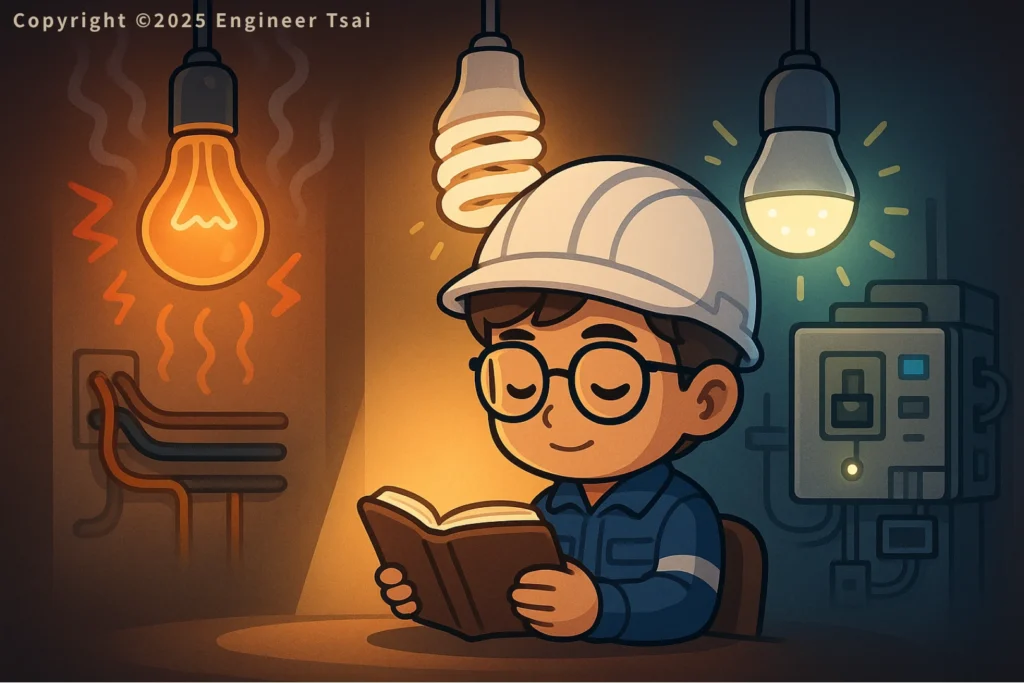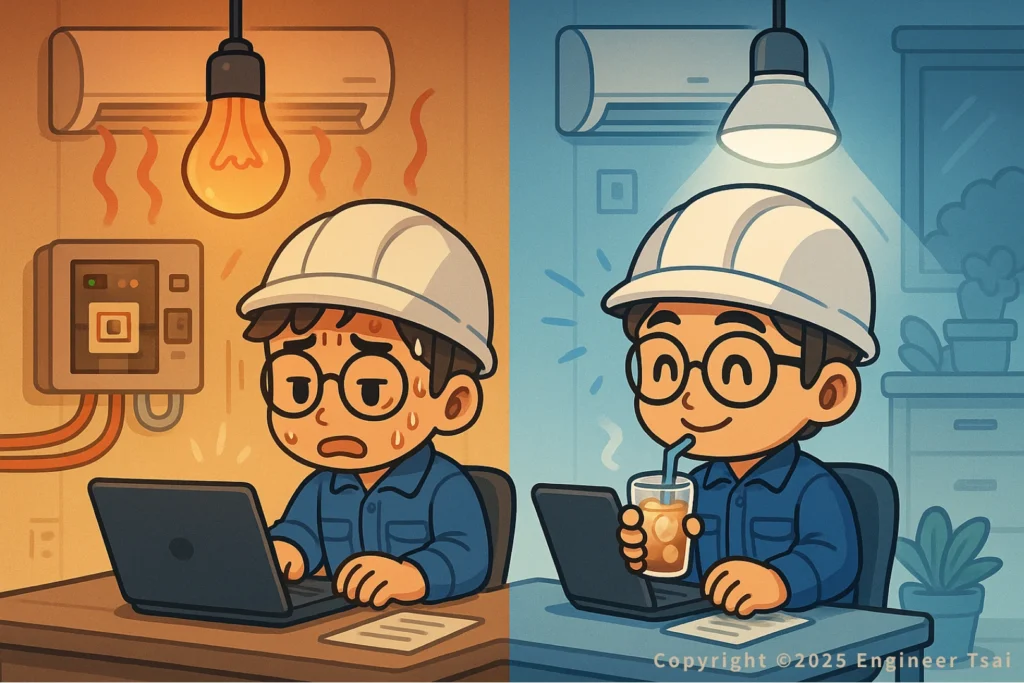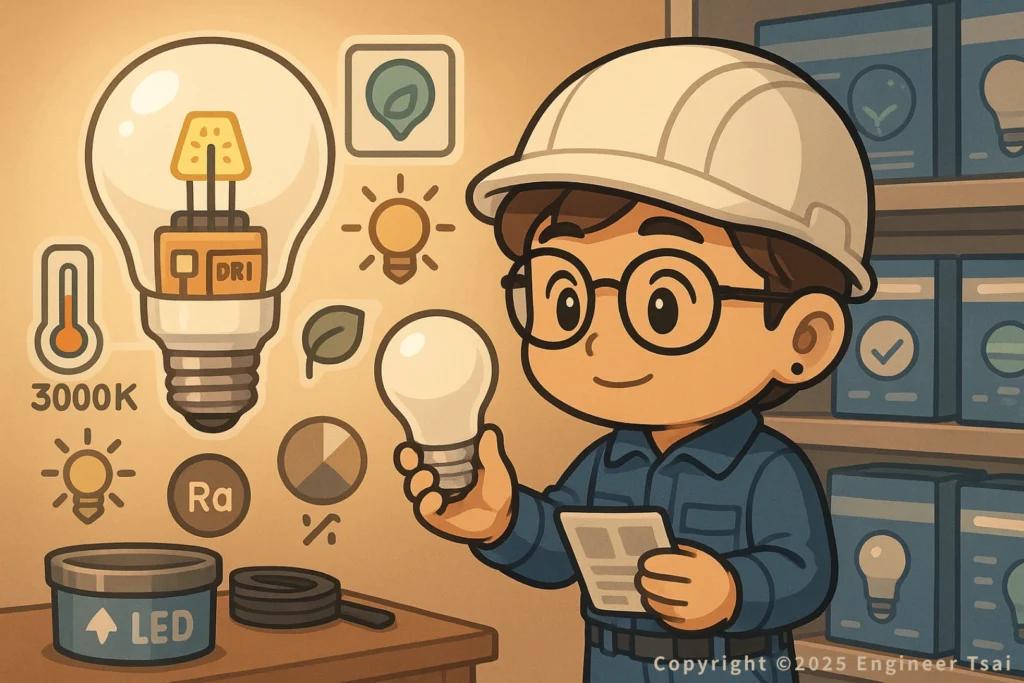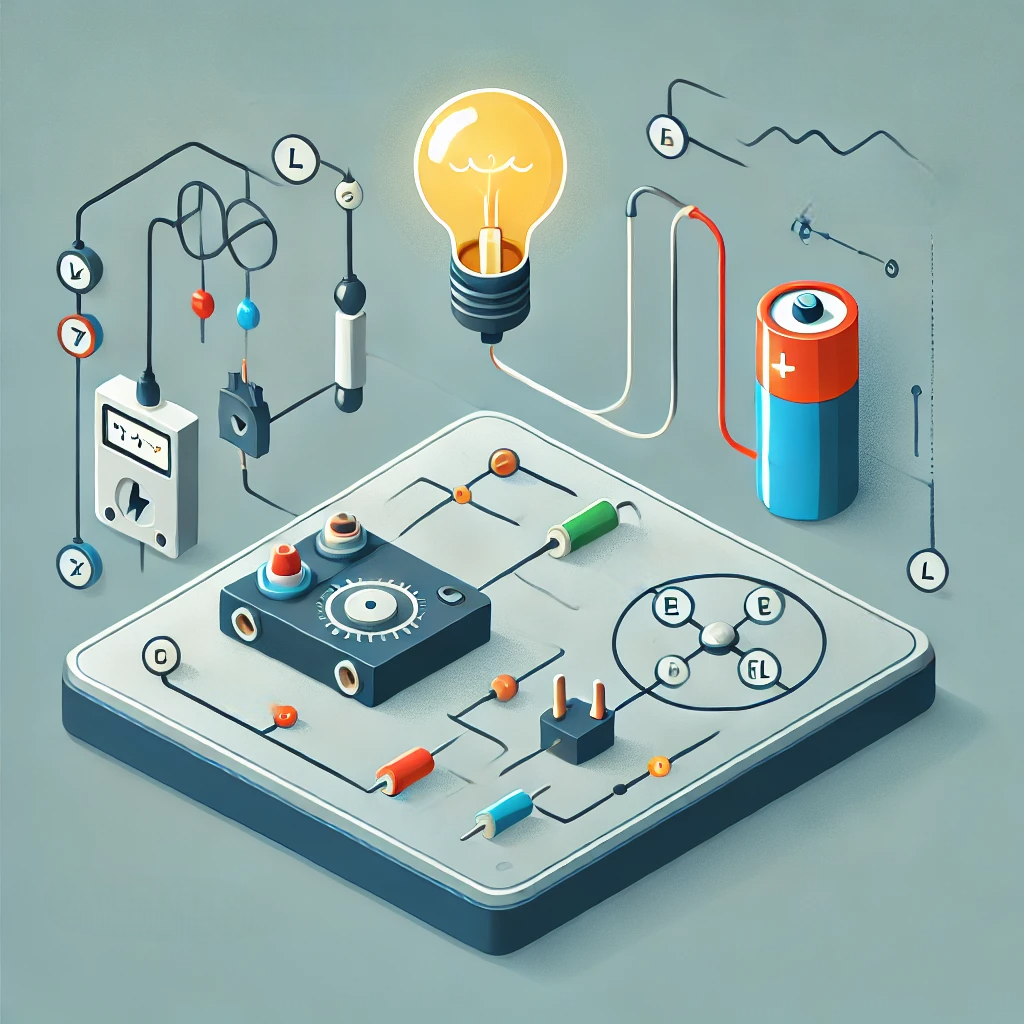▶️ Watch now: Why are LEDs brighter and cheaper to run? (60 seconds, zero fluff)
Instead of heating a filament, LEDs use semiconductors to convert electricity directly into light. As a result, there’s far less heat and far more lumens per watt. In this quick clip, you’ll see how LEDs emit light, why they save energy, and what specs (color temperature & CRI) to check before you buy.
How LEDs Lights Work — And Why They’re So Efficient
These days, many homes feel all-LED: ceiling fixtures, desk lamps, even flashlights. Still, why did LEDs win?
More importantly, what’s happening inside that tiny dome that lets them sip power yet shine so bright?
To answer that, here’s a plain-English breakdown with takeaways you can use at the hardware store.

First, a quick throwback: how older bulbs make light
Incandescent (old-school filament). When current flows through a thin tungsten wire, it heats to ~2,000–3,000 °C and glows. However, most of that input becomes heat, not visible light. Typically, you get only ~10–15 lm/W.
Fluorescent/CFL (“energy saver”). Instead, a discharge excites mercury vapor to create UV, which then strikes a phosphor coating to produce visible light. Although efficiency improves, warm-up, dimming, and disposal remain weak points. Expect roughly 50–70 lm/W.
Then LEDs flipped the script. Rather than glowing a wire or a gas, semiconductors convert electron energy directly into photons. Consequently, light comes with far less waste heat.
So… how does an LED actually make light?
LED = Light Emitting Diode. Inside, a p–n junction joins two semiconductor regions. When current flows forward, electrons drop from a higher energy state to a lower one. During that drop, energy is released as a photon (light). Meanwhile, the material’s bandgap sets the light’s color (wavelength).
Because LEDs create light directly—not by preheating something—far less energy is lost as heat. Therefore, they run cooler, last longer, and deliver higher efficiency.
Why LEDs are more efficient (with real numbers)
In practice, the gains are big:
- Incandescent: ~10–15 lm/W.
- CFL: ~50–70 lm/W.
- Modern consumer LEDs: ~100–150 lm/W (and premium models can go higher).
With the same 10 W, an LED can be several times brighter than an incandescent and roughly 2× a decent CFL. In addition, LEDs turn on instantly—no warm-up and minimal flicker—so eyes relax and video looks clean.
Pocket rule: Less heat → less waste → lower bills (plus, lighter AC loads in summer).

The brains behind the bulb: the LED driver
Importantly, an LED is not a “dumb” bulb you wire straight to mains. Instead, it needs a driver—a tiny power supply that feeds constant current so the diode neither flickers nor burns out. A good driver adds constant-current regulation, flicker control, and power-factor/EMI conditioning. By contrast, bargain bulbs often cut corners here. As a result, you’ll see visible flicker, hear buzzing, or suffer early failure. When in doubt, buy reputable brands and look for UL, Energy Star, and FCC marks.
How to choose LED bulbs (so you actually like the light)
First, measure brightness in lumens—not watts. For example, table or bedroom lamps often need 450–800 lm; kitchen or office task lights do well at 800–1,600 lm per fixture; entryways feel fine around 400–800 lm.
Next, pick a color temperature (Kelvin) to match the mood. For instance, 2700–3000 K (Warm White) feels cozy for living rooms and bedrooms; 3500–4000 K (Neutral) suits kitchens and bathrooms; 5000 K (Daylight) helps in garages, craft benches, and detail work.
Additionally, check CRI (Color Rendering Index). Aim for CRI ≥ 80 in everyday spaces; however, choose CRI ≥ 90 where color accuracy matters (food prep, art, clothing).
If dimming matters, buy “dimmable” LEDs and confirm compatible dimmers; otherwise, older dimmers can cause flicker or buzz. Because LEDs dislike trapped heat, select bulbs rated for enclosed fixtures when needed; alternatively, use lower-wattage models with better heat sinks.
Bonus savings: LEDs reduce your cooling load
Remember, old bulbs double as tiny heaters. Consequently, summertime AC works harder and bills rise. Since LEDs run cool, you save on lighting and on cooling—therefore, homes, retail spaces, and offices all benefit.
Common LED myths (and what’s actually true)
- “LEDs always look harsh and blue.” Not necessarily. With the right color temperature and CRI, 2700–3000 K LEDs feel like classic bulbs—minus the heat.
- “All LEDs flicker.” Sometimes. However, quality drivers minimize flicker; therefore, look for “flicker-free” or “video-safe” claims.
- “More watts = brighter.” No. For LEDs, lumens—not watts—measure brightness.
- “They all last 50,000 hours.” Only when cooled and driven correctly. Because heat kills LEDs, choose better drivers and avoid enclosed fixtures unless rated.
Quick buyer’s checklist
Ultimately, confirm the essentials before you pay:
- Lumens match the brightness you need.
- Color temperature fits the room vibe (2700–5000 K).
- CRI ≥ 80 (or ≥ 90 for color-critical areas).
- Dimmable and on a compatible dimmer if you’ll dim.
- UL/Energy Star/FCC certifications present.
- Enclosed-fixture rating if the housing is sealed.
Keep this line handy: “Lumens for brightness, Kelvin for color, CRI for quality.”

The bottom line
Ultimately, LEDs aren’t merely “the next bulb.” Rather, they’re a different way to make light—turning electricity directly into photons with minimal waste. Therefore, they’re brighter per watt, cooler to the touch, and longer-lived. Yes, the upfront price can be higher; nevertheless, the payback in energy savings, comfort, and lifespan makes switching a no-brainer. Choose wisely, and you’ll see—literally—why LEDs are the electric supercar of lighting.
Recommended reading
🔹《What Is Electricity? A Plain-English Primer》
Understand the flow behind every light you switch on.
🔹《DIY Basics: Current vs. Voltage》
The two most confused terms in home electrics, finally untangled.
🔹《What Is Resistance? The Unsung Hero in Circuits》
Why even simple resistors matter in LED designs.
—
Got a “cheap LED died in a year” story—or a brand you swear by? Drop it in the comments. Your tip might save someone a few returns (and a few headaches).


